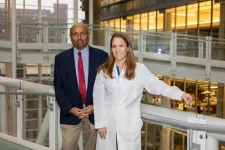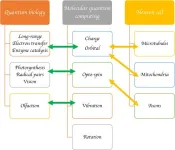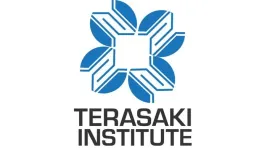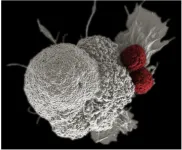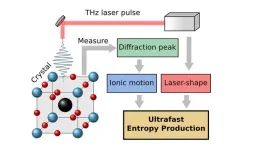(Press-News.org) A multidisciplinary team of University of Cincinnati Cancer Center researchers have opened a Phase 2 clinical trial to test a new combination treatment for glioblastomas (GBM), the most deadly form of brain tumors.
The team, led by UC’s Pankaj Desai, PhD, and Trisha Wise-Draper, MD, PhD, has been awarded a Catalyst Research Award from the Dr. Ralph and Marian Falk Medical Research Trust to move the trial forward.
Study background
Difficult to diagnose at early stages, GBMs are aggressive brain tumors that become symptomatic once the tumor is substantial. Current treatments include immediate surgery to safely remove as much tumor as possible, radiation and chemotherapy, but the tumor often recurs or becomes resistant to treatments. The average patient survives no more than 15 months after diagnosis.
Drug-based treatments for GBMs face an additional challenge known as the blood-brain barrier, which only allows certain compounds into the brain based on their physical and chemical properties.
The research team is focused on the use of a drug called letrozole that has been used for more than 20 years as a treatment for breast cancer. The drug targets an enzyme called aromatase that is present in the breast cancer cells and helps the cells grow.
Early research in Desai’s lab found that aromatase was present in brain tumor cells, making letrozole a potential new treatment for GBMs.
Phase 0/1 trial results
To bring letrozole from Desai’s lab to patients’ bedsides, he collaborated with Wise-Draper and neuro-oncologists and neurosurgeons at UC’s Brain Tumor Center to launch a Phase 0/1 clinical trial.
“In the academic setting, we are very good at doing molecular research that enhances our understanding of the mechanism of disease and preclinical characterization of efficacy, safety and other aspects of drug development research,” said Desai, professor and chair of the Pharmaceutical Sciences Division and director of the drug development graduate program in UC’s James L. Winkle College of Pharmacy. “But you can’t translate this into a clinical trial without a Phase 1 clinical trial expert like Dr. Wise-Draper and the experts at the Brain Tumor Center.”
The researchers published the results of the Phase 0/1 trial March 26 in Clinical Cancer Research, a journal of the American Association for Cancer Research.
“Letrozole was safe up to the highest dose, and there were no safety concerns in the Phase 0/1 trial,” said Wise-Draper, section head of Medical Oncology and professor in the Division of Hematology/Oncology in UC’s College of Medicine. “The biggest conclusion is that it was safe and that we could reach what we felt was going to be the effective dose based on Dr. Desai’s preclinical work.”
The research team collected tumor tissues from patients enrolled in the Phase 0/1 trial and found that letrozole was crossing the blood-brain barrier when they analyzed the samples in Desai’s lab.
“We can categorically show that in humans the drug actually crosses and reaches the brain tumor at concentrations that we believe are likely to be most efficacious,” Desai said.
Phase 2 trial design
Since GBMs are aggressive and complicated tumors, Desai said most likely new effective treatments will be combinations of drugs instead of one single drug.
In the Phase 2 trial, patients will be given letrozole in combination with a chemotherapy drug called temozolomide that is already approved as a GBM treatment. Desai said preclinical research in his lab and input from Brain Tumor Center collaborators, including neuro-oncologist and former UC faculty member Soma Sengupta, suggested this combination treatment could be more effective than letrozole alone.
A total of 19 patients with recurrent GBM who are no longer eligible for additional surgery will be enrolled in the first stage of the trial. The results from this trial will guide the design of future larger Phase 2 trials.
The team estimates it will complete enrollment within two years, and two patients have already been enrolled.
Collaboration and funding support
Wise-Draper and Desai have worked together on various research projects for nearly 15 years and said this project would not be moving forward without the varied expertise each team member brings.
“I think collaboration with multidisciplinary teams is critical to be able to have the expertise and all the components you need, including biostatistics, pharmacokinetics, clinical, basic science and neuro-oncology expertise,” Wise-Draper said. “The future of all science is team science. No one really can do everything on their own anymore because we’re all too specialized.”
“Only academic centers with integrated scientific and clinical expertise are able to move their molecules from the research bench to clinical trials,” Desai added. “It takes a lot of persistence, ups and downs, highs and lows of funding, but we have been supported by a very strong team of people. It’s a journey that has taken a while and a lot of hard work by a number of people, and we’re in a very exciting stage.”
Early-stage support for the preclinical and clinical trial studies was provided by the UC Brain Tumor Center, where investigators from UC’s colleges of Medicine, Pharmacy, Engineering and Applied Science and Cincinnati Children’s Hospital collaborate on brain tumor research.
UC’s Brain Tumor Center provided direct support for the completion of the Phase 0/1 trial and some of the correlative mechanistic studies that will continue during the Phase 2 trials using funds raised in the annual Walk Ahead for a Brain Tumor Discoveries fundraiser.
The Falk Catalyst Award provides up to $350,000 in seed funding to support translational research projects, which the researchers said was crucial in opening the new trial.
“Oftentimes the funding is somewhat limited for initial clinical trial development compared to many other more early-stage studies that you can do,” Desai said. “So that gap is filled by foundations like the Falk Medical Research Trust, and that really is very helpful and plays a critical role in accelerating clinical development.”
“It would not be possible if we didn’t have the funding to be able to bring this combination into patients that desperately need new treatment options,” Wise-Draper said.
As the clinical trial progresses, the team is also collaborating to find other drugs to combine with letrozole to treat GBMs, funded by a $1.19 million National Institutes of Health/National Institute of Neurological Disorders and Stroke grant. The team is already preparing a proposal for larger confirmatory Phase 2 studies and expanding the opportunities for cutting-edge brain tumor clinical trials in Cincinnati.
Desai said the ongoing research includes additional collaboration from experts including David Plas, PhD, Biplab DasGupta, PhD, and Tim Phoenix, PhD (molecular/cancer biology); Gary Gudelsky, PhD (neuro-pharmacology) Rekha Chaudhary, MD, and Lalanthica Yogendran, MD (neuro-oncology); Mario Medvedovic, PhD (bioinformatics and genomics); and Shesh Rai, PhD (biostatistics). Many graduate students, postdoctoral fellows and the clinical trials support staff also provide essential support for the project.
END
Collaborative University of Cincinnati Cancer Center team opens Phase 2 brain tumor trial
Falk Catalyst Award funds next phase of research seeking new treatments for glioblastomas
2024-03-26
ELSE PRESS RELEASES FROM THIS DATE:
Silicon spikes take out 96% of virus particles
2024-03-26
An international research team led by RMIT University has designed and manufactured a virus-killing surface that could help control disease spread in hospitals, labs and other high-risk environments.
The surface made of silicon is covered in tiny nanospikes that skewer viruses on contact.
Lab tests with the hPIV-3 virus – which causes bronchitis, pneumonia and croup – showed 96% of the viruses were either ripped apart or damaged to the point where they could no longer replicate to cause infection.
These impressive results, featured on the cover of top nanoscience journal ACS Nano, show the material’s promise ...
New research area promotes both quantum computing and cognitive science
2024-03-26
Diving deep into quantum biology or cognitive science alone is challenging enough. That being said, a research team recently wrote a review article highlighting molecular quantum computing, a newly emerged research area that is likely to push the research boundaries of both. The review was published Feb. 21 in Intelligent Computing, a Science Partner Journal.
Future theoretical breakthroughs may be achieved by connecting molecular quantum computing, the bridge research area, with cognitive science and quantum ...
Among deaf people, women have higher levels of personal growth
2024-03-26
One of the features of the deaf community is that it is highly diverse. As well as including people of different ages and genders, the members of the community do not all share the same type of deafness or form of communication. Firstly, the time of onset of deafness and the degree of hearing loss vary greatly. And secondly, not everybody uses sign and oral language in the same way. All these aspects have a bearing on the well-being of deaf people. However, few studies specifically analyse the effect of each one.
The PhD thesis, defended by Amaia Jauregi-Orbe at the Faculty ...
Severe hurricanes boost influx of juveniles and gene flow in a coral reef sponge
2024-03-26
Named for its ropy-looking long branches, Aplysina cauliformis, a coral reef sponge, provides a critical 3D habitat for marine organisms and helps to stabilize the foundation of coral reefs. However, these upright branching sponges are highly susceptible to breaking during storms, which increases sponge fragmentation and contributes to population clonality and inbreeding.
Many sponges can survive severe damage and undergo frequent fragmentation, which is considered a mechanism for asexual reproduction. While fragmentation is a commonly utilized reproductive strategy in rope sponges, they also can reproduce sexually by producing larvae. How and whether they recolonize following ...
Terasaki Institute for Biomedical Innovation catalyzes healthcare revolution with launch of four cutting-edge startups
2024-03-26
LOS ANGELES – (3/26/24) - In a landmark move for biomedical progress, the Terasaki Institute for Biomedical Innovation (TIBI) today unveiled the launch of four pioneering startup companies. These ventures represent a strategic leap forward in TIBI's commitment to transforming healthcare through innovation. By harnessing the institute's groundbreaking research in biomaterials, micro-needles, organoids, tissue engineering, and advanced biosensing, these startups are poised to tackle some of the most pressing health challenges ...
Faux reefs for coastal protection
2024-03-26
Engineers have designed a modular artificial reef that can dissipate wave energy far better than natural coral reefs, according to a study. Sixty percent of the world’s coral reefs are under threat from rising ocean temperatures, overfishing, or coastal development. At the same time, climate change is leading to sea level rise, frequent high-tide flooding, and powerful storm surges. Artificial reefs can help protect coastal infrastructure from storms as well as provide habitat for marine organisms. Michael Triantafyllou and colleagues proposed and tested an architected cellular reef structure ...
Mount Sinai study calls for major changes in the way people with comorbidities are selected by physicians for lung cancer screening
2024-03-26
A Medicare policy requiring primary care providers (PCPs) to share in the decision-making with patients on whether to proceed with lung cancer screening is fraught with confusion and lack of evidence-based information, and may actually be undermining the purpose for which it was created, Mount Sinai researchers say.
In their study, published in Annals of Family Medicine, the team reported that the policy, enacted nearly 10 years ago to encourage the use of lung cancer screening, is in urgent need of new ...
Smart maneuver: Epstein-Barr virus hijacks host genome boosting nasopharyngeal carcinoma
2024-03-26
Nasopharyngeal carcinoma (or NPC) is a rare type of cancer affecting the epithelial tissue of the nasopharynx, the upper part of the throat behind the nasal cavity. Among the three main subtypes of NPC, non-keratinizing undifferentiated squamous carcinoma is endemic to the regions of Southern China and Southeast Asia, with a strong association with Epstein-Barr virus (or EBV) infection. EBV, also known as human tumor virus, is a double-stranded DNA virus that is associated with various cancers, such as Burkitt lymphoma, T-cell lymphoma, and gastric cancer. EBV genomes mostly survive autonomously as episomes or extrachromosomal ...
New method to measure entropy production on the nanoscale
2024-03-26
Entropy, the amount of molecular disorder, is produced in several systems but cannot be measured directly. An equation developed by researchers at Chalmers University of Technology and Heinrich Heine University Düsseldorf, now sheds new light on how entropy is produced on a very short time scale in laser excited materials.
“New computational models give us new research opportunities. Extending thermodynamics for ultrashort excitations will provide novel insights into how materials function on the nanoscale,” says Matthias Geilhufe, Assistant Professor ...
Scientists on the hunt for evidence of quantum gravity’s existence at the South Pole
2024-03-26
Scientists on the hunt for evidence of quantum gravity’s existence at the South Pole
University of Copenhagen team contributes to an Antarctic large-scale experiment striving to find out if gravity also exists at the quantum level. An extraordinary particle able to travel undisturbed through space seems to hold the answer.
Several thousand sensors distributed over a square kilometer near the South Pole are tasked with answering one of the large outstanding questions in physics: does quantum gravity exist? ...
LAST 30 PRESS RELEASES:
Numbers in our sights affect how we perceive space
SIMJ announces global collaborative book project in commemoration of its 75th anniversary
Air pollution exposure and birth weight
Obstructive sleep apnea risk and mental health conditions among older adults
How talking slows eye movements behind the wheel
The Ceramic Society of Japan’s Oxoate Ceramics Research Association launches new international book project
Heart-brain connection: international study reveals the role of the vagus nerve in keeping the heart young
Researchers identify Rb1 as a predictive biomarker for a new therapeutic strategy in some breast cancers
Survey reveals ethical gaps slowing AI adoption in pediatric surgery
Stimulant ADHD medications work differently than thought
AI overestimates how smart people are, according to HSE economists
HSE researchers create genome-wide map of quadruplexes
Scientists boost cell "powerhouses" to burn more calories
Automatic label checking: The missing step in making reliable medical AI
Low daily alcohol intake linked to 50% heightened mouth cancer risk in India
American Meteorological Society announces Rick Spinrad as 2026 President-Elect
Biomass-based carbon capture spotlighted in newly released global climate webinar recording
Illuminating invisible nano pollutants: advanced bioimaging tracks the full journey of emerging nanoscale contaminants in living systems
How does age affect recovery from spinal cord injury?
Novel AI tool offers prognosis for patients with head and neck cancer
Fathers’ microplastic exposure tied to their children’s metabolic problems
Research validates laboratory model for studying high-grade serous ovarian cancer
SIR 2026 delivers transformative breakthroughs in minimally invasive medicine to improve patient care
Stem Cell Reports most downloaded papers of 2025 highlight the breadth and impact of stem cell research
Oxford-led study estimates NHS spends around 3% of its primary and secondary care budget on the health impacts of heat and cold in England
A researcher’s long quest leads to a smart composite breakthrough
Urban wild bees act as “microbial sensors” of city health.
New study finds where you live affects recovery after a hip fracture
Forecasting the impact of fully automated vehicle adoption on US road traffic injuries
Alcohol-related hospitalizations from 2016 to 2022
[Press-News.org] Collaborative University of Cincinnati Cancer Center team opens Phase 2 brain tumor trialFalk Catalyst Award funds next phase of research seeking new treatments for glioblastomas
